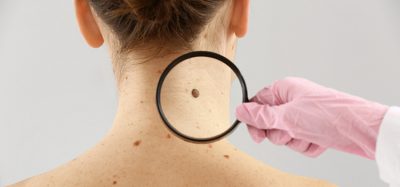Breakthrough in breast cancer detection
Posted: 9 August 2023 | Drug Target Review | No comments yet
MIT has unveiled a wearable ultrasound device. Ingeniously designed to seamlessly integrate into a bra, this innovative technology opens new avenues for early breast cancer diagnosis.


Published in Science Advances, a significant stride towards advancing breast cancer detection, a team of researchers at MIT has unveiled a wearable ultrasound device. Ingeniously designed to seamlessly integrate into a bra, this innovative technology opens new avenues for early breast cancer diagnosis. The flexible patch, easily navigable across breast tissue, yields ultrasound images that rival the resolution of traditional medical imaging probes, making it a promising tool for enhancing patient outcomes.
Lead author and associate professor at MIT’s Media Lab, Dr Canan Dagdeviren, drew inspiration from her personal experience—her late aunt, Fatma Caliskanoglu, who tragically succumbed to late-stage breast cancer despite regular cancer screenings. This spurred Dagdeviren to envision a diagnostic device that could be discreetly incorporated into undergarments, enabling more frequent screenings for women at a higher risk of breast cancer, particularly those susceptible to interval cancers—tumours that develop between scheduled mammograms and tend to be more aggressive.
Breast cancer detected in its earliest stages boasts a remarkable survival rate of nearly 100%. However, as detection is delayed, this rate drastically drops to a mere 25%. To address this critical issue, Dagdeviren and her team embarked on designing a miniaturized ultrasound scanner to empower users with the ability to perform imaging whenever necessary. Their groundbreaking scanner employs a novel piezoelectric material, enabling them to downsize the ultrasound technology while maintaining optimal performance.
To make the device wearable, the researchers devised a flexible, 3D-printed patch with honeycomb-like openings, which can be seamlessly attached to a bra. The magnets within the patch allow for easy alignment with bra openings, ensuring optimal skin contact. Encased within a small, movable tracker, the ultrasound scanner can be adjusted to six different positions, facilitating comprehensive imaging of the entire breast from multiple angles. Remarkably, the scanner operates with simplicity, requiring no specialized expertise to administer.
Working alongside the MIT Center for Clinical and Translational Research, the researchers conducted initial testing with a 71-year-old woman who had a history of breast cysts. The results were promising, as the device successfully detected cysts as small as 0.3 centimeters in diameter, akin to the size of early-stage tumours. Furthermore, the resolution achieved by the wearable ultrasound device matched that of traditional ultrasound, reaching depths up to 8 centimeters.
Dr Anantha Chandrakasan, dean of MIT’s School of Engineering and one of the authors of the study, praised the device for its invaluable contribution to early detection and diagnosis of breast cancer. Leveraging advances in materials, low-power circuits, AI algorithms, and biomedical systems, the wearable ultrasound device holds tremendous potential to revolutionize ultrasound research and medical device design.
This wearable ultrasound patch is poised to redefine breast cancer detection paradigms by offering a comfortable and reliable diagnostic option. Removing the need for women to travel to imaging centres, it is set to break down barriers to early breast cancer detection, particularly for those with limited access to screening facilities. The researchers are working towards miniaturizing the imaging system to a size akin to a smartphone, making the technology even more convenient for patients.
The MIT team envisions an innovative workflow, where collected data will be analysed using artificial intelligence algorithms to track changes in images over time. This approach aims to deliver more accurate diagnostics than conventional assessments by radiologists comparing images taken years apart. Additionally, the researchers are eager to explore the potential of adapting the ultrasound technology for scanning other areas of the body.
As breast cancer continues to be the most common cancer among women, the development of this wearable ultrasound device is a remarkable stride towards promoting early detection and life-saving treatment. With the potential to elevate the breast cancer survival rate and provide a more comfortable and accessible diagnostic experience, this revolutionary technology may usher in a new era of breast cancer care, empowering patients and healthcare professionals alike to fight this devastating disease with renewed vigor.
Related conditions
Breast cancer
Related organisations
MIT
Related people
Dr Anantha Chandrakasan, Dr Canan Dagdeviren








